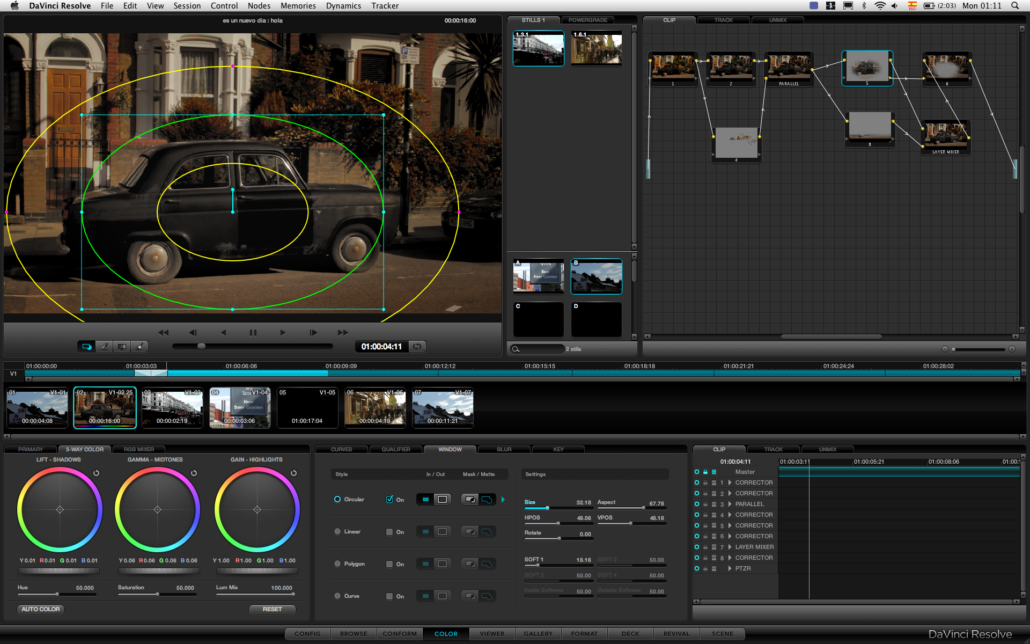News
DaVinci Resolve 12 Public Beta
Yesterday the long awaited public beta of DaVinci Resolve 12 was released, introduced at NAB and with great new features for DaVinci Resolve 12. Blackmagic Design has decided to release it still in beta because they want to get as much feedback as possible from editors and colorists.
First of all we have a change in the names, leaving behind the word Lite for the free version (now it will simply be called DaVinci Resolve) and calling DaVinci Resolve Studio the paid version ($995). There is also the DaVinci Resolve Advanced Control Surface option, for $29,995, which includes the controller.
The company also unveiled yesterday some additional features that had not been announced until now, which are:
- Support for Inter Iris and Iris Pro GPUs, to improve performance especially in notebooks.
- Creation of optimized proxies with customized features for codec and resolution.
- New Smooth Cut transition, which uses optical flow algorithms to smoothly switch between planes using a Morph-like effect.
The color
We will start with the features concerning color, although they are not the most outstanding features of this update:
- Support for timelines that manage their own color science, as well as ACES 1.0 transformations.
- New interface for the use of curves.
- Automatic color analysis and match between two or more planes.
- 3D perspective tracker.
- New 3D Keyer with improved options for adjusting the matte.
- Proprietary intelligent filters.
- Possibility to collapse multiple nodes into composite nodes.
- Ripple of corrections across multiple clips.
New editing functions
Yes, many of the new features bring DaVinci Resolve even closer to the professional editing market.
- New customizable interface with a lighter color scheme.
- New multi-camera editing feature that allows you to synchronize up to 12 angles based on timecode, audio waveform or traditional in and out points.
- All trim modes, multi-slip, slide, ripple and roll, have been extended to be able to select multiple points and make dynamic and asymmetric trims of clips, even if they are on the same track.
- Timelines can be nested, edited together, and expanded or collapsed to simplify multi-scene project setups.
- New transition curves allow you to create curves for transition parameters and there are controls to adjust the movement directly from the viewer.
Audio greatly improved
- The audio engine has been completely revamped, offering higher sampling and real-time playback with proper performance, including backward playback and slow motion tape style when using the trims with JKL.
- VST and AU plug-ins are now supported and can be used on individual clips or entire tracks.
- Audio parameter settings can be recorded and contain automation and curve editor support.
- For the first time, it will be possible to export projects directly to ProTools via AAF.
Media management
Media management has been redesigned to make editing workflows work properly. There are now tools for copying, moving, transcoding, relinking and consolidating.
- Entire projects, including their media, can be archived and restored.
- Using metadata tags we can easily find media in large projects.
- You can now import media by dragging it directly from the Finder or Windows Explorer, or by using the new “Favorites” function to access your most frequently used folders.
Finally, DaVinci Resolve 12 supports remote rendering for systems that have shared storage and database.
DaVinci Resolve 12 is now available for Mac, Windows and Linux and can be downloaded via this link. The official version will be released at the end of August.


